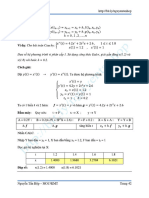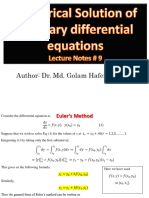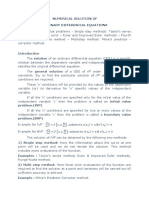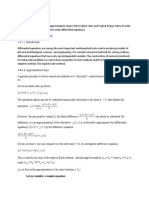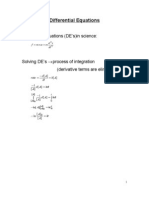0% found this document useful (0 votes)
82 views4 pagesNumerical Methods for ODEs
Uploaded by
nikhil.hoskotiCopyright
© © All Rights Reserved
We take content rights seriously. If you suspect this is your content, claim it here.
Available Formats
Download as PDF, TXT or read online on Scribd
0% found this document useful (0 votes)
82 views4 pagesNumerical Methods for ODEs
Uploaded by
nikhil.hoskotiCopyright
© © All Rights Reserved
We take content rights seriously. If you suspect this is your content, claim it here.
Available Formats
Download as PDF, TXT or read online on Scribd
/ 4




